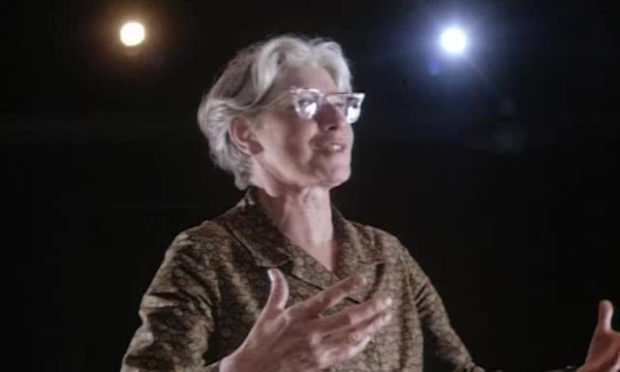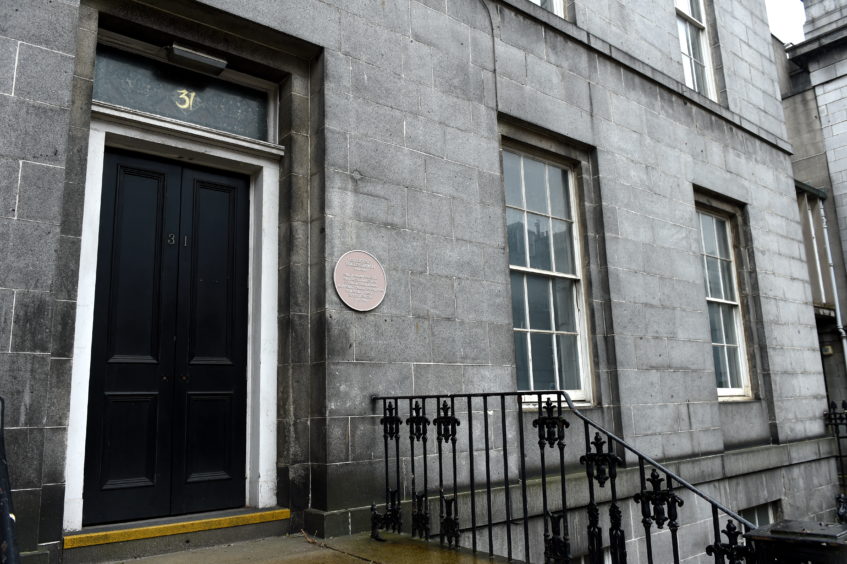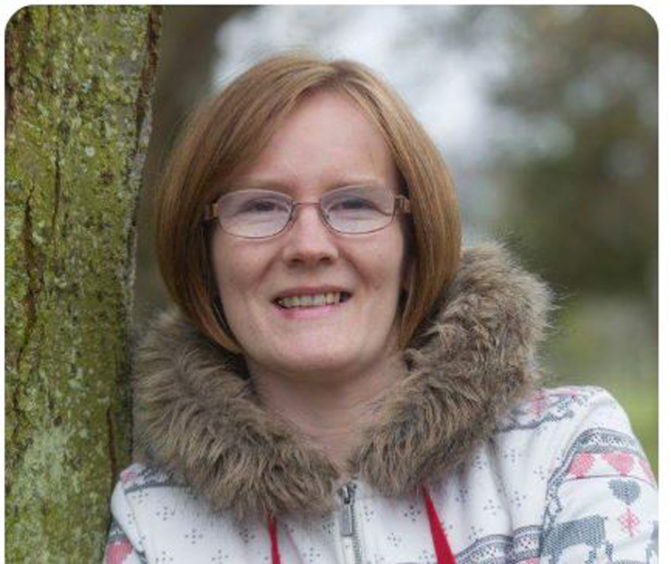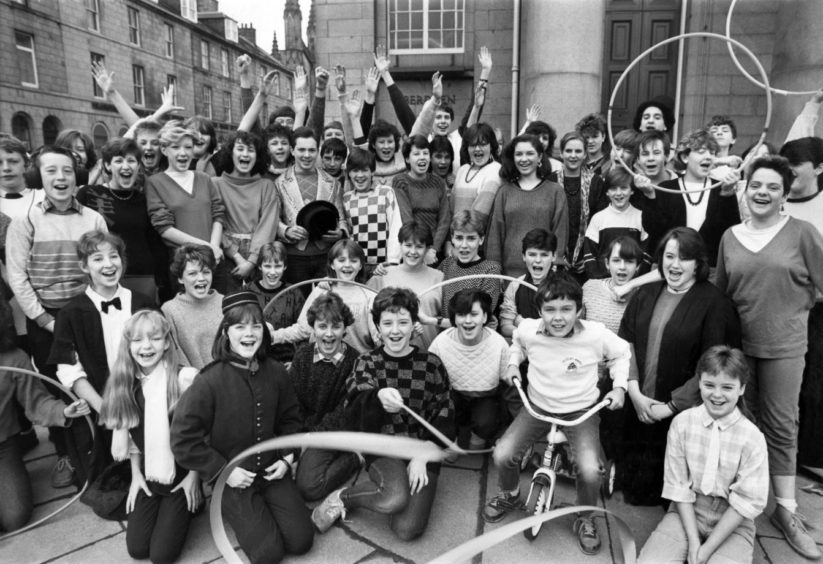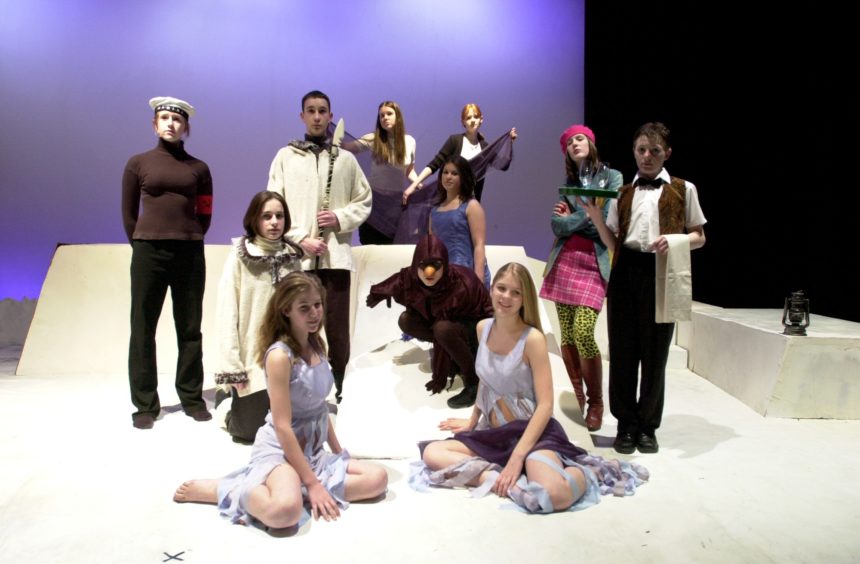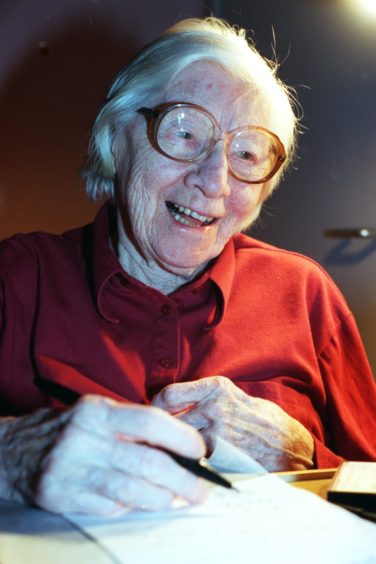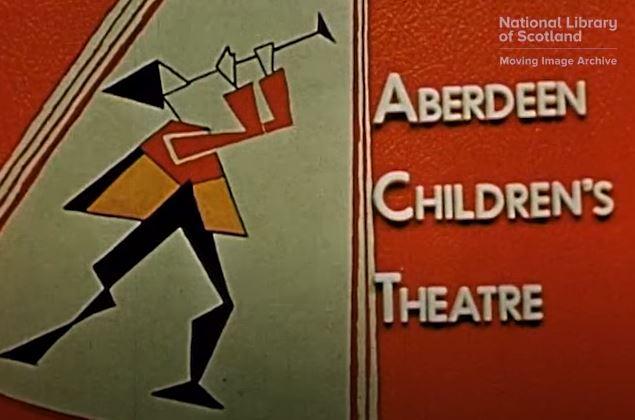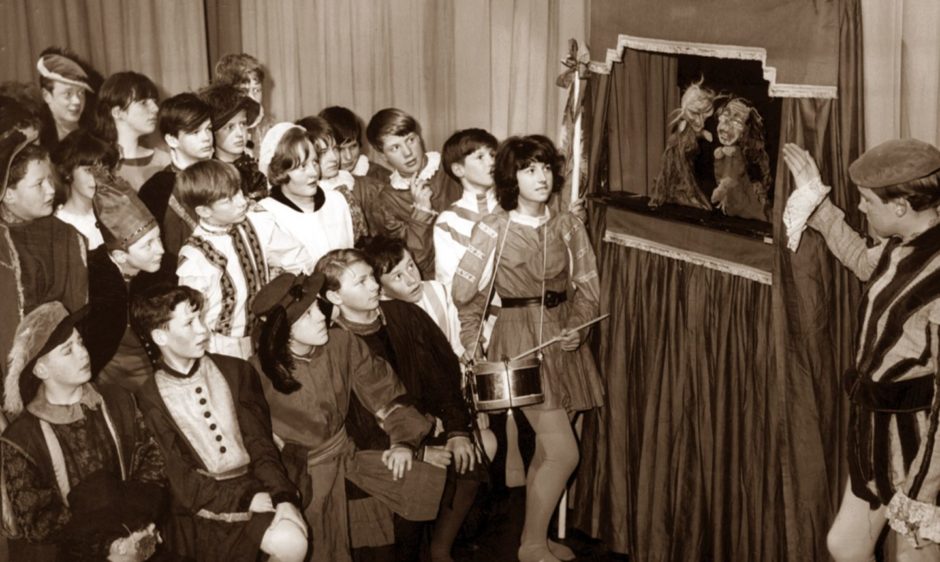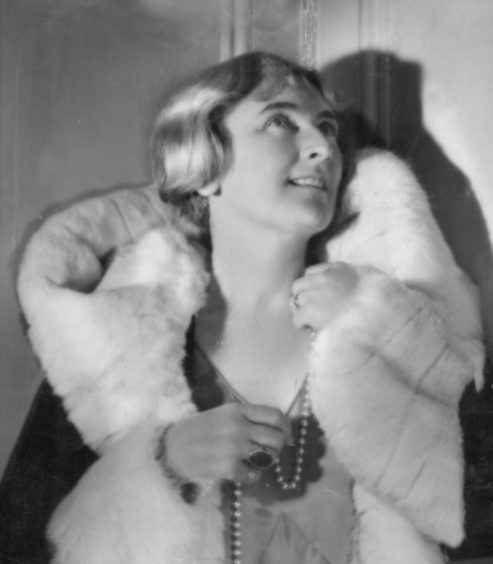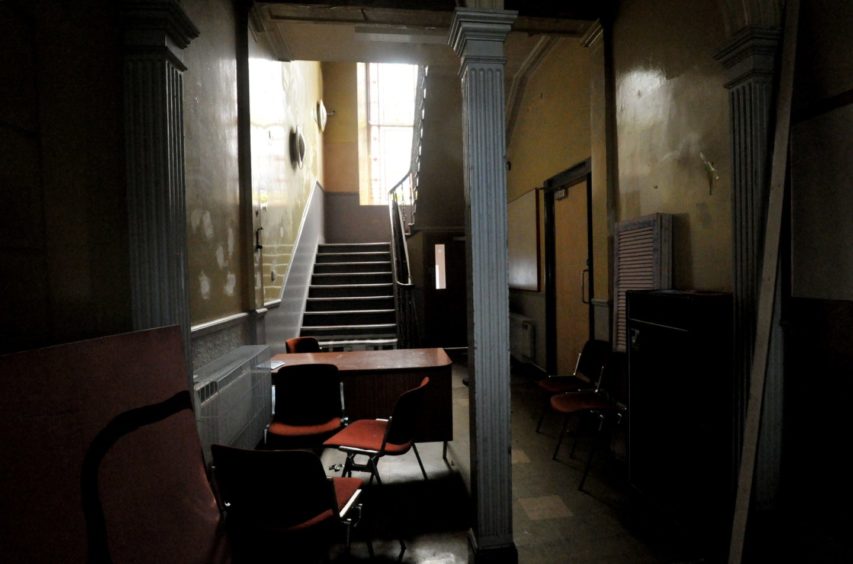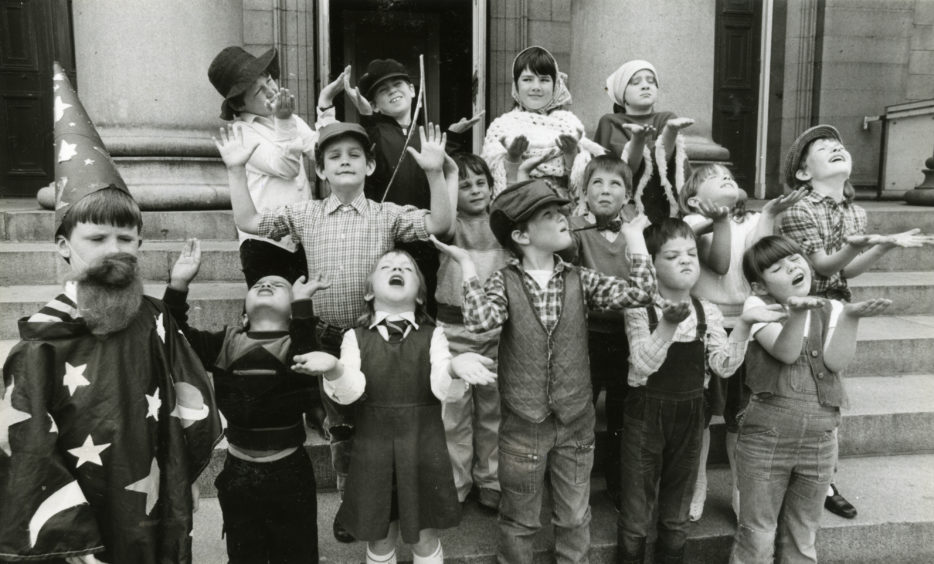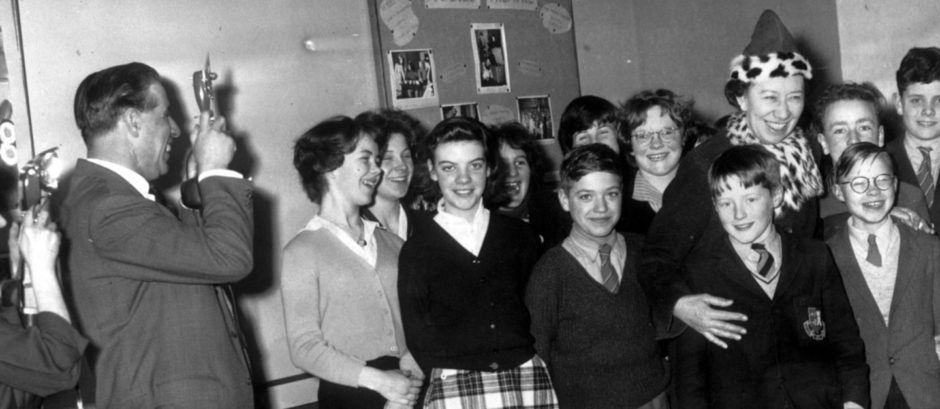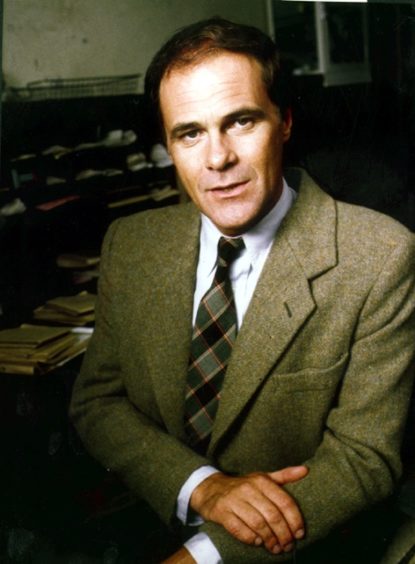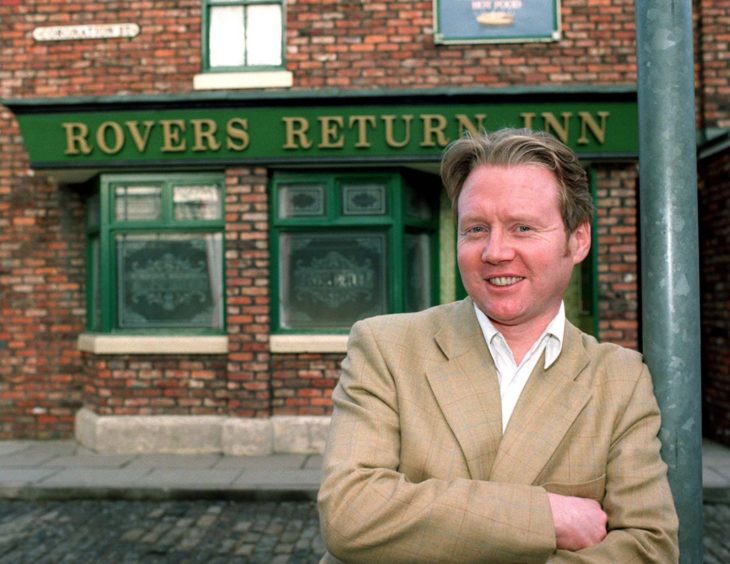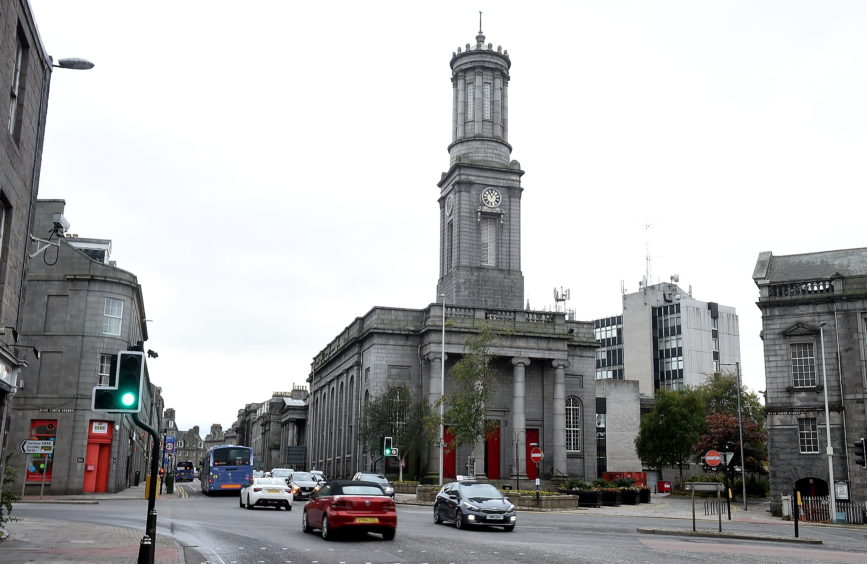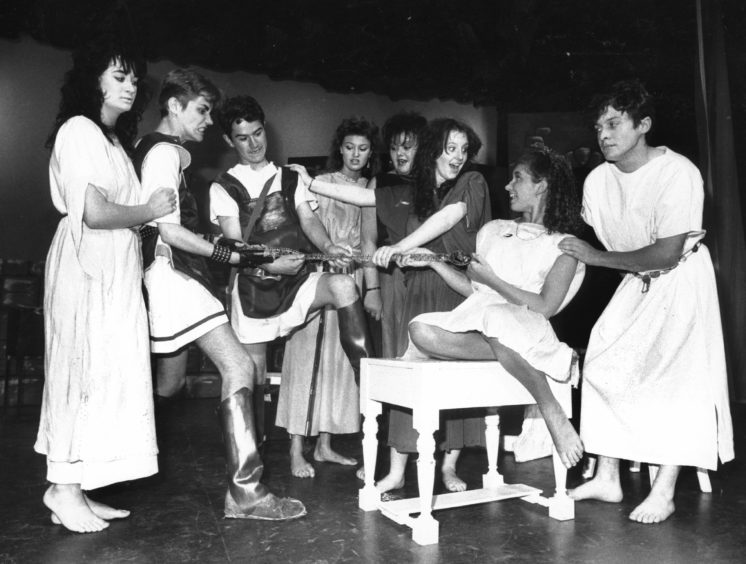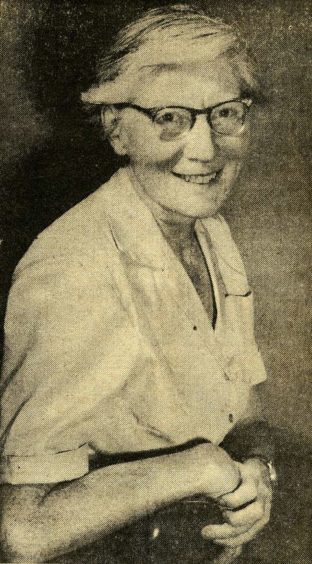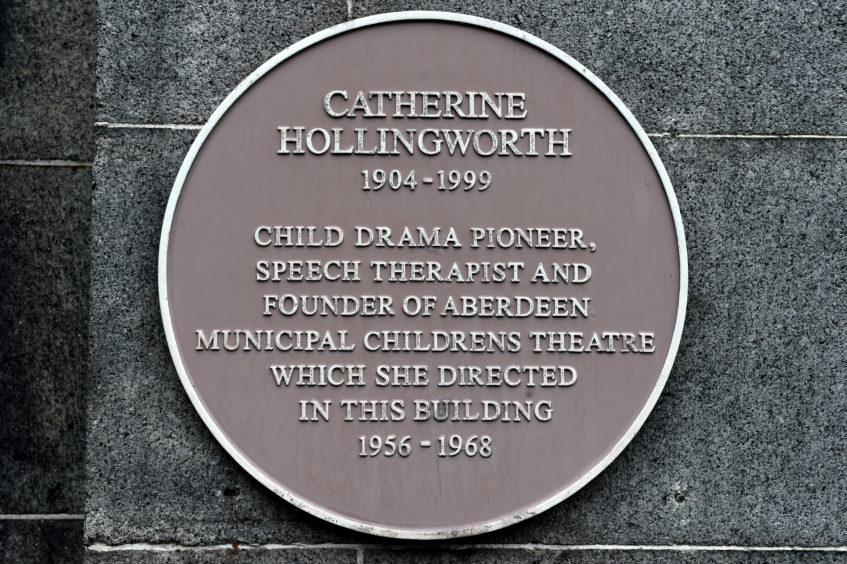She was a world pioneer in children’s theatre, awarded an OBE for blazing a trail in speech therapy and gave one of Scotland’s famed actors his first break – but to the people of Aberdeen she was the “Speech Wifie”.
Today, though, the name Catherine Hollingworth is fading from memory – despite the hundreds of people who every day pass the plaque that celebrates her life. It adorns the wall of the Aberdeen Children’s Theatre she founded in King Street.
But local historian and author Dr Fiona-Jane Brown is determined to put the spotlight back on Miss Hollingworth’s astonishing and groundbreaking achievements in a new book highlighting some of the forgotten greats of Aberdeen.
“She was a complete pioneer but we never hear of her today, yet she laid the foundations of the Children’s Theatre, the only one in the whole country, which allowed children to develop through using theatre skills,” said Dr Brown.
“She also made the point that dialect, in its place, was a totally worthy thing. She also said if you can be bilingual and have as much mastery of English as you can of Scots, then you will get on in the world. She was all for equipping people with skills not just to get on, but also to be an influence for good.
“I just felt so inspired reading about her. It is because of her we have all the theatre work in the arts centre.
“When Northern College teaching college still existed they followed her in training teachers to use drama.
“All this because of this little wifie from Brechin, who was a bit shy, suffered from migraines, yet she was still a world-beater.”
When Miss Hollingworth opened the Aberdeen Children’s Theatre in 1942, nothing else existed like it anywhere in the world – somewhere where kids explored their artistic creativity on their own, finding their own paths instead of being dictated to by adults.
“The children worked together themselves, they didn’t have teachers directing them,” said Dr Brown, who runs the popular Hidden Aberdeen tours and website.
“They did little playlets, they did recitations, they made up radio shows. Catherine always said she wasn’t trying to create child actors. She was trying to give children a way of learning to express themselves succinctly, learning to work together through using theatre skills – like creating a show with costumes, scripts and sets.
“They had to work it out. They weren’t told by teachers what to do. She was basically equipping them to be better people. The acting is not the primary thing. It’s the teamwork and the expressiveness.
“She was the founder, here in Aberdeen, of training children to communicate and if they were able to communicate, they could influence the world. That was her thing. No other education authority had even thought of this, using theatre skills to be involved in child development.
It was lauded internationally – with experts coming from as far afield as South Africa to visit Catherine and find out more about her work, all of them leaving impressed and inspired.
“It resonated worldwide,” said Dr Brown. “She was also invited to Russia. Theatre was quite a big thing in the Communist regime with workers creating theatre. She was one of the few, if not the first women, to be invited over there to see their workers’ theatre.
“She also took part in competitions and festivals which meant her name was known all over the world.”
Miss Hollingworth was born and bred in Brechin and started training in speech therapy shortly after leaving school. In 1935 she had first-hand experience of how important the power of speech is.
She was in a car crash near Kirriemuir and was thrown through the windscreen, badly injuring her throat. For a year, after plastic surgery and had to relearn how to work.
Miss Hollingworth later said: “The accident affected the one part of me which was important – my mouth. It was then I realised there was a big future for speech therapy.”
And a big future for her, too.
But Miss Hollingworth admitted herself when she started her work in Aberdeen, there was no grand scheme to start a prototype theatre for the rest of the country – and further afield to follows.
In an interview with the Press & Journal in 1967 she said: “There was no plan. Things just evolved naturally and I think that is better than starting with a blueprint.”
Miss Hollingworth had been training in London when she left for the Granite City as part of the evacuation of civilians at the start of the Second World War. She was hired by Aberdeen Council as a director of speech and drama in the education department in 1941. It was through this, the Children’s Theatre was born.
Dr Brown said: “It was a new job and she basically had to make it up as she went along.
“She was training and helping children in schools with speech defects.”
But Miss Hollingworth was also great friends with actors of the day, including Ann Casson – daughter of the great Sybil Thornkdyke – and her sister Margaret, who was married to Aberdeen actor Michael Devlin.
Dr Brown said: “These were folk who were all big in the beginning of talkie cinemas, so Ann Casson came with her professional company and put on shows, just for schools. The children got to watch them on their own and Catherine’s thing was if they can see theatre without adults being there, they react with their own imaginations, not how they think they should react.
“So, 800 children got to see this, then Catherine set up drama workshops for all the children at an old hall in John Street. That was the beginning of it.”
The council saw the value of her work and its benefit for children’s development. The project, which started in 1942, grew with a move to King Street funded by the education committee.
The Children’s Theatre started in a Georgian tenement building, then spread into the now Aberdeen Arts Centre and into the Medical Society Hall.
Each weekend it would run theatre schools, and Miss Hollingworth also set up the Festival of Spoken Word to give children something to work towards. The festival was open to schools across the city.
Dr Brown said: “As well as traditional plays – they tackled things like Chekhov – they made up their own stuff.
“The children directed themselves, but if they needed to go and get adults to help them, they would.
“At the time of the festival, the children even organised the vans to move their scenery about. They organised everything. The children really did run it themselves.”
Miss Hollingworth could, at that time, have made a healthy living polishing the accents of wealthy children, but she wanted to give every child the freedom of speech.
In her 1967 interview she said: “I remember hearing children chattering away to each other in the playground through a classroom window. But these same children couldn’t speak the kind of language a teacher would expect.”
She wanted to help young people communicate effectively, increase their confidence, and improve relationships with those around them.
That was the aim of both her work with the council and with her Children’s Theatre. It led to her being awarded the OBE for services to speech therapy in 1965 and given honorary fellowships from the Royal Academy of Music, College of Speech Therapists and Educational Institute of Scotland.
Miss Hollingworth was such a familiar figure both in the theatre and in schools, children referred to her as the “speech wifie”. It was an affectionate name that stayed with her throughout her illustrious career.
She also gave actor David Rintoul – famed for playing Dr Finlay in the 1990s TV remake – his start in acting. Miss Hollingworth had founded the Longacre Players, an amateur theatre company for adults, as a spin-out from the Children’s Theatre.
Mr Rintoul had begged her to let him join Longacre, even though he hadn’t been a member of the Children’s Theatre. Impressed by his enthusiasm she bent the rules to kick off his career – as an electrician for the Players.
Others who passed through the theatre and Players included former Coronation Street producer Brian Park – who appeared in an episode of the original Dr Finlay’s Casebook – and Foreign Secretary Robin Cook, then a pupil at Aberdeen Grammar School.
Dr Brown says the Children’s Theatre and the Longacre Players – later run by city theatre legend Annie Inglis – has a legacy that resonates in Aberdeen to this day.
“There were some other really quite famous actors in the 70s who came out of the Players, a man called Malcolm Rennie. He was the youngest man to play King Lear on the stage.
“There was also the influence of the Children’s Theatre that went on and on and spawned other things. It was the backbone of what became the Aberdeen Art Centre. Catherine believed children should have the chance to learn in any arts, not just theatre, but art and music as well.
“Annie Inglis was one of the main founders of the Arts Centre, but she was heavily influenced by Catherine’s idea that the whole point was to develop youth education through the arts.”
Catherine’s influence can still be found in the fact Aberdeen has one of the most active amateur theatre communities in the country. Its plethora of thriving amateur companies attract hundreds of both young and adult members today and delight packed audiences in venues ranging from His Majesty’s Theatre to the Arts Centre.
Dr Brown said: “A lot of them are the children and grandchildren of children who went through the Children’s Theatre. It is such an influence. A lot of the people who work with me on Hidden Aberdeen tours were all involved in the Longacre Players and the Children’s Theatre before that.”
Miss Hollingworth eventually retired in 1967.
Dr Brown said: “Catherine was in her job as director of speech and drama for 27 years. She had done so much, she worked seven days a week, always doing stuff. She was taking puppet shows up to the hospital and raising money for the nurses’ home.
“She was so busy, when she retired the council realised she had been doing the work of two or three people and split her job in two, so there would be a drama specialist and a speech therapist specialist.”
Later in her life, Miss Hollingworth didn’t let a little thing like retiring after a glorious career slow her down. She and a former pupil set up speech therapy clinics in Dundee Infirmary for stroke patients.
Clearly, Miss Hollingworth had many accolades and firsts to look back on. She prized two above all.
“I have two jewels in my crown. One is the Aberdeen Municipal Children’s Theatre. The other is my work in Dundee with stroke patients with speech problems.”
In an interview with the Evening Express in 1993, she said: “I have two jewels in my crown. One is the Aberdeen Municipal Children’s Theatre.
“The other is my work in Dundee with stroke patients with speech problems. These are the two things I will never forget. I get a lot of pleasure from remembering the people I have worked with.”
When Miss Hollingworth passed away in 1999 she was lauded for her pioneering work and almost immediately the campaign was started to put a plaque in her honour on the Children’s Theatre, which is now part of the Arts Centre.
Dr Brown now hopes to enhance the memory of the inspiring “Speech Wifie” even further with her book, Hidden Aberdeen 2.
“It is about all the different men and women who have either made Aberdeen or Aberdeen has made them. It is characters you have never heard mention of, or folk you do know, but find out more about them and think ‘wow’.”
Dr Brown hopes to secure a publishing deal for the book in the near future.
